Anurag Shukla
The history of girls’ education in India is long and complicated. The demand for girls’ education picked up in India after the British parliament, via a clause in the charter of 1813, permitted the missionaries to operate in the territories controlled by the East India Company. Once missionaries were allowed in the administrative boundaries of the Company, they began approaching native populations by opening schools and hospitals. Unlike their predecessors in India, they also allowed girls to study these schools. The first such residential school was established in Tirunelveli in 1821. Another school was opened in 1837, by Mrs. Anna Drew, a missionary of the London Missionary Society. Since their inception, these schools had a policy of admitting girls.
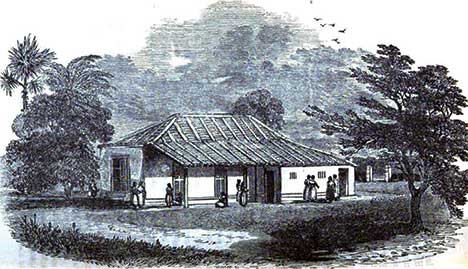
Sending girls to school was a relatively recent phenomenon in the United Kingdom as well. As Christina de Bellaigue argues in her book, Educating Women: Schooling and Identity in England and France, 1800-1867, it was not until the late 18th century that religious organizations in Great Britain established schools for female students. However, only wealthy families who could afford to pay for their daughters’ education had access to these institutions. It was only in the late 19th century, via the 1870 Education Act that the British government made primary education compulsory for all children, regardless of gender or social status. Even after the passage of this law many girls did not attend school as their families often needed them to work at home or in the family business.
India followed an identical trajectory, with girls from upper caste or affluent backgrounds generally receiving their education at home. For girls from marginalized communities, receiving an education in a school was an inconceivable idea. This began to change in the 1830s and 1840s, when the Tarkhadkar brothers – Bhaskar Pandurang and Dadoba Pandurang began to campaign against child marriage, the poor living conditions of widows, and the denial of education to women. In Bengal, Kalikrishna Mitra began advocating for girls’ education alongside his sibling Nabinkrishna and educationist Peary Charan Sarkar. These early progressives saw education for girls to emancipate women and combat various social ills. Their campaign for girls’ education resulted in the founding of the Kalikrishna Girls’ High School in 1947, the first free Girls’ High School of British India established by any Indian except Christian Missionary or government. This was followed by social reformers Jyotirao Phule and Savitribai Phule who opened a girls’ school in Pune in 1948. They opened two more schools in 1851-52.
In the latter half of the 19th century, girl’s education in India increased significantly. The Wood’s Dispatch of 1854 acknowledged the importance of female education and their employment. In 1871, there were 134 secondary and 1,760 primary schools for girls, and by 1901-1902, these numbers increased to 461 and 5,628, respectively. Most of this expansion was propelled by community-led initiatives. In the 1870s, Gopal Hari Deshmukh, also known as Lokhitwadi, and Mahadev Govind Ranade launched a campaign for compulsory education, also known as mass education, and girl’s education in the Bombay presidency. They urged the government to establish institutions in rural areas. Mary Carpenter, an educationalist from England who had been involved for some time in establishing teachers’ training schools in Bengal, was asked to establish the first primary teacher’s training college for women in Poona in 1870 as it was difficult to find any trained female teacher at that time.
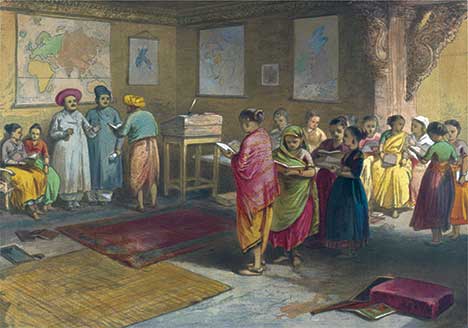
(source link: https://www.vandaimages.com/2006BF9152-School-of-Mahratta-Brahmin-girls-by-William.html)
The investment in girls’ education and opening exclusive schools for them also resulted in part from the democratization of higher education. The old system where one’s role was assigned at the birth was breaking down, and in its place, a more open system emerged where individuals, coming from all social backgrounds, had an opportunity to compete. Additionally, the new system also opened many positions in the colonial bureaucracy which could be accessed by anyone, including women. As the colonial government opened higher educational institutions in presidency towns, economically and socially privileged communities rushed to send their wards, including girls, to these institutions, so that they could eventually join the colonial bureaucracy. The system benefited the likes of Anandibai Joshi who went on to become the first Indian female doctor of western medicine in 1886.
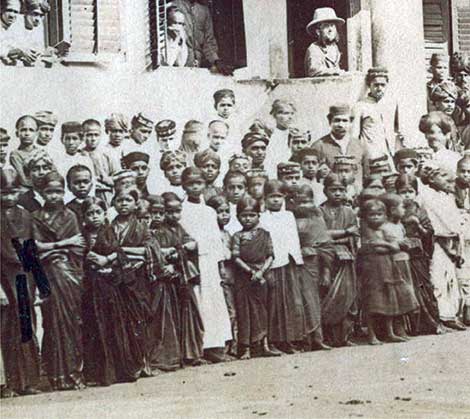
As girls’ education became a priority, leaders from other communities also joined the effort. Dadabhai Naoroji, famous for his thesis on Poverty and Un(British) Rule in India and for proposing ‘the ‘drain of wealth’ theory, campaigned for the promotion of female education in Bombay presidency. In October 1849, Dadabhai Naoroji and twelve other Maharashtrian and Parsi Elphinstonians opened six schools under the auspices of the Students’ Literary and Scientific Society, three for Parsi girls and three for Hindu Maharashtrian girls. Together with his friends, Naoroji pleaded with parents to enroll their daughters in the new schools for girls. By the beginning of 1853, more than 500 girls were attending schools opened for them due to his efforts.
Although Naoroji’s fellow Parsis pioneered female education, they were soon joined by members of other communities. In 1851, Gujarati Hindu merchants also endowed a girls’ school outside Fort; three years later, Mangaldas Nathubhai founded a second school. In Ahmedabad, the city’s influential Jain nagarsheth expressed “heartfelt gratitude” for the success of Bombay’s girls’ schools and transferred funds to the society’s account. Maganbhai Karamchand, another Sheth, donated Rs. 20,000 to establish two girls’ schools in Ahmedabad. Dadoba Pandurang, an old acquaintance of Naoroji’s, reported in the mid-1850s that there were two private girls’ schools in Ahmednagar (now in Maharashtra) and that some Muslim girls attended a privately-run school.
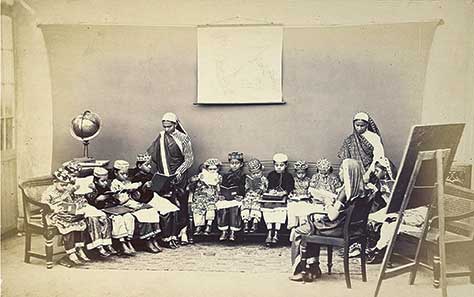
The movement to enroll girls in schools also spread to different part of India. Many native kings followed the presidencies on opening girls’ schools in their territories. Many community-based trusts and organizations also came forward to start girls’ schools to educate girls of their own communities.
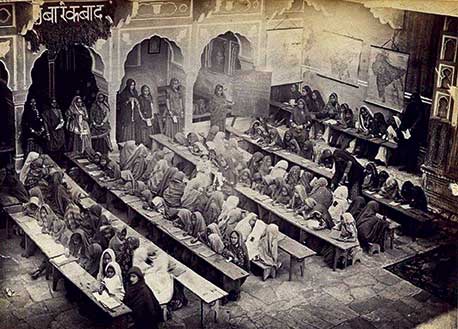
The decade beginning in the 1870s was the most fruitful for the education of girls in India since across the country, there were programmes oriented around the education of women. Schools exclusively for girls were growing everywhere from Sindh, which is now in Pakistan to Surat. Even smaller places like Belgaum in Karnataka had a girls’ school by 1870.
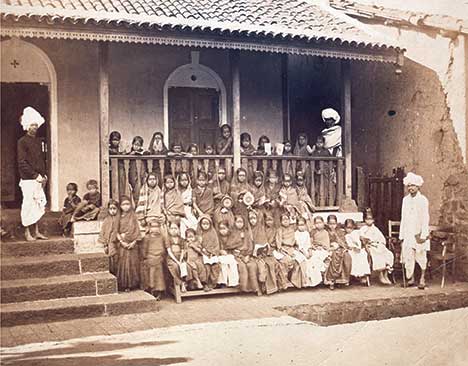
(source link: https://www.bl.uk/onlinegallery/onlineex/apac/photocoll/g/019pho001000s46u04633000.html)
The proliferation of schools catering exclusively to female students inevitably resulted in an increased demand for qualified female educators. It was normal practice for many communities to hire women to educate their young ladies. In many areas, young women who had been the first in their families to attend school became the first generation of students to go on to become teachers. The focus of instruction in these schools remained basic reading, writing and calculation. The lessons on how to take care of their homes was also part of the formal curricula. Trading communities such as the Marwaris also introduced their girls to calculating interest so that they could run the family’s enterprise while the men were engaged in trade elsewhere.
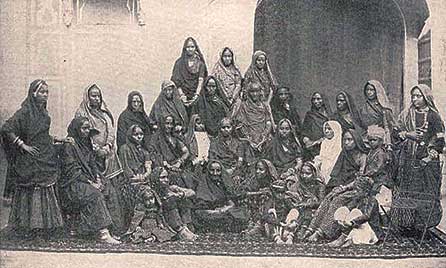
Technological advancements greatly added in capturing these moments of girls’ studying in schools. It was during the decade that began in 1860 that India saw the introduction of photography. A good number of colonial officials became interested in photography and began taking images as a pastime. In addition, the colonial authority initiated the census process in the year 1871, which resulted in the regularization of the practice of data gathering on educational institutions such as schools and universities. Trusts and institutions which ran these girls’ schools started documenting their activities so that they could be submitted to the colonial authorities for grants and accreditation purposes. Native kings like the Maharaja of Mysore also introduced music in the curriculum in his jurisdiction to attract a greater number of girls to his schools. It was mostly the queens of the ruling kings, as first-generation learners themselves, who were taking interest in girls’ education.
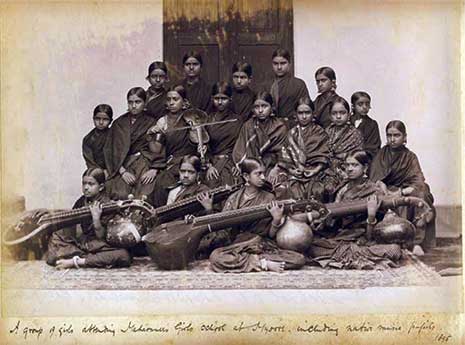
The vision of rulers such as Sayajirao Gaekwad-III was also crucial to the spread of girls’ education. In 1906, he was the first Indian monarch to implement free and mandatory primary education in his state, putting his territory well ahead of contemporary British India. Parents were required to pay a fine of two annas for each day that their child was absent from school until grade 6. This fine was subsequently increased to one rupee. Consequently, there was a constant increase in the number of children receiving an education. By 1910, there were as many as 2,938 primary schools in the state, which catered to the requirements of girls, disabled, and “untouchable” children.
As the number of female students steadily increased, it became apparent that a university dedicated exclusively to women was necessary. To provide for the increasing demand for higher education among women, Dhondo Keshav Karve, who was a campaigner for widow remarriage and female education, opened the SNDT Women’s University in Poona in 1916, the first Women’s university in India as well as in South-East Asia. The first five women graduated in 1921 from this University.
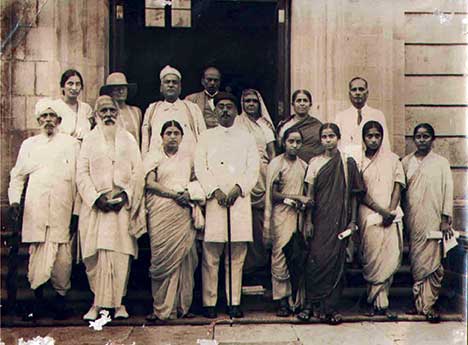
Mahatma Gandhi’s entry into active Indian politics was a blessing to the cause of girls’ education. In addition to emphasizing the importance of girls’ education, he encouraged their participation in public life as well as in political movements. Rabindranath Tagore too, following on his Brahmo Samaj principles, actively promoted girls’ education and argued for their physical, mental, moral, and spiritual developments. To serve his cause, Tagore opened Visva-Bharati University on 23 December 1921. Girls’ education got another shot in the arm when Babasaheb Ambedkar lent his support to it. He firmly believed in equality and argued that the education for girls and women would enable them to achieve agency in terms of voting and marriage. However, without the efforts of early reformers who fought diligently for girls’ education, none of the successes and accomplishments in the field of girls’ education in the 20th century would have been possible.
While these efforts created the ground for expanding education among girls, there was still so much to do as India got freedom from the British and became a republic. The overall literacy rate among women in 1947 was still at 6 percent.
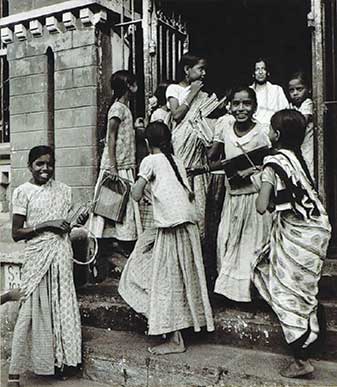
(source link: https://www.famsf.org/artworks/sari-draped-girl-students-and-teacher-leaving-their-school-in-bangalore-india)
The female literacy rate did not improve much even in the post-Independence period as India decided to prioritize higher education over primary education. The census of 1951 recorded the female literacy rate at 8.6 percent.
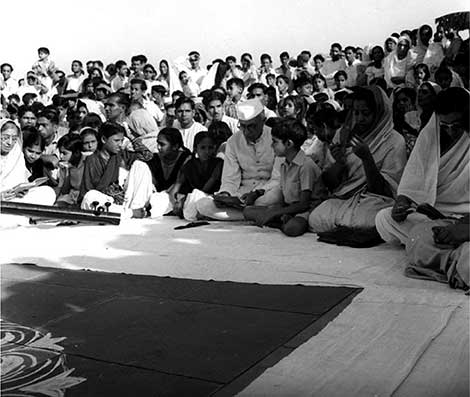
(source link: https://archive.org/details/propix.27286171041)
The abysmal status of female education led the Government of India to appoint a committee on women’s education under the chairmanship of Durgabai Deshmukh in 1958. The committee recommended making similar investments in girls’ education as of boys. It also recommended facilitating free transport and free residential accommodation for women to encourage their participation in education. The focus of the committee was about raising awareness around girls’ education.
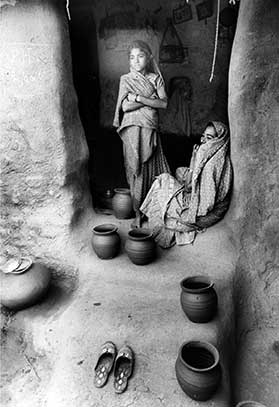
Another commission under the leadership of DS Kothari was set up in 1964 (also known as Kothari Commission) which submitted its report in 1966. The commission emphasized on female education by recommending similar curriculum for boys and girls and enroll girls in schools on a priority basis.
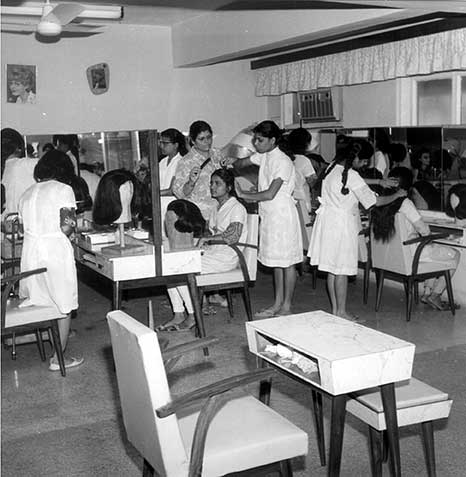
The National Policy on Education 1986 suggested sweeping reforms in education, including education for girls. Its recommendation also included spreading education among adult women. Adult education programs were started all across India. The Government of India also started/launched satellite-based TV and radio programs to reach out to more girl students spread across the country. Programs like Mahila Samakhya also helped with female literacy, as they tend to create awareness around women’s rights.
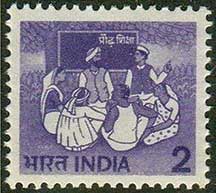
India implementing liberalization policies following the structural adjustment program saw many schemes like District Primary Education Program (DPEP) implemented across India. These programs, funded by external donors, encouraged the central and state governments to make education for the girl child a priority.
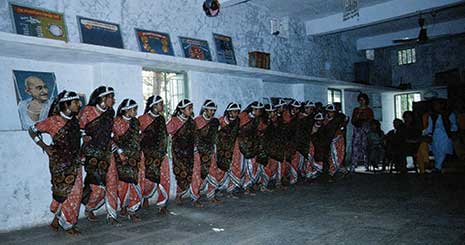
The decade beginning 2000 was historic for education in general. The 86th Constitutional Amendment Act, 2001, paved the way for elementary education becoming a basic right. Schemes like Kasturba Gandhi Balika Vidyalaya Scheme (KGBV) were also started in this decade to promote education among girls coming from marginalized communities. The Right to Education Act, 2010 further reinforced the right to free and compulsory education for children from 6 to 14.
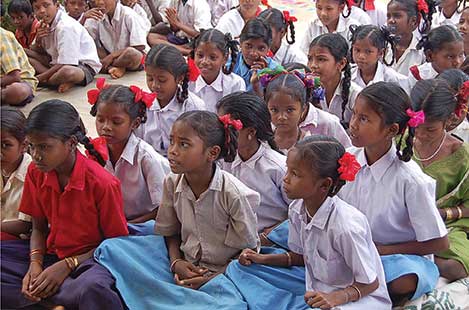
(source link: https://commons.wikimedia.org/wiki/File:Girls_students,_Chhattisgarh,_India.jpg)
The last available census data showed that the female literacy rate was now at 65.46 percent, a substantial increase from merely 6 percent at the dawn of independence. While previously the efforts towards achieving universal literacy among girls were limited to the government, the decade of 2010 saw many private players entering the field and contributing towards girls’ education. Additionally, technology made a big headway in education, with the usage of mobile phones and applications becoming common. Though the large gap in the ownership of digital devices remain, this stark divide became apparent when COVID struck India and schools were forced to close. The most impacted were the children who did not have access to online education. The impact of COVID on girls’ education was even more acute as many girls dropped out of school. The latest ASER data (2023) shows the learning levels of children to be at 2012 level due to COVID-led shutdown.
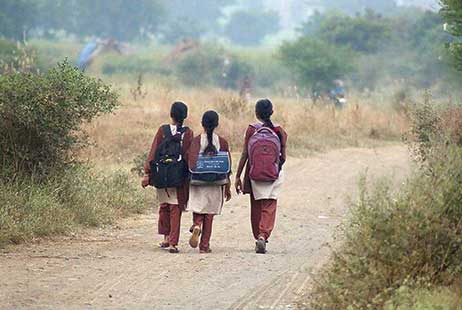
As India completes 75 years of independence, it is incumbent upon us that we achieve a universal quality education for all. The fourth target of sustainable development goals (SDGs) also talks about ensuring inclusive and equitable quality education and promote lifelong learning opportunities for all. It would be impossible to achieve this goal if India does not specifically focus on getting girls back to schools, as well as ensuring quality education for all. Some attempts in this direction, such as National Initiative for Proficiency in Reading with Understanding and Numeracy (NIPUN Bharat), have already been initiated. However, we still have a long way to go to realize the dream of our freedom fighters who foresaw the dream of making India a just and equitable society.
References
• Azim Premji Foundation. (2021). Myths of online education. Retrieved from Website on: Https://Archive. Azimpremjiuniversity. Edu. in/SitePages/Pdf/Myths_of_online_education.Pdf, 10.
• De Bellaigue, C. (2007). Educating women: schooling and identity in England and France, 1800-1867. OUP Oxford.
• Lennox, J., Reuge, N., & Benavides, F. (2021). UNICEF’s lessons learned from the education response to the COVID-19 crisis and reflections on the implications for education policy. International Journal of Educational Development, 85, 102429.
• Naik, J. V. (1979). Social Reform Movements in the Nineteenth and Twentieth Centuries in Maharashtra – A Critical Survey. Social and Religion Reform Movement in the 19th and 20th centuries (Calcutta, 1979), 284-85.
• Naik, J. V. (2021). Intellectual Basis and Ideological Premises of Maharashtrian Response to British Colonial Rule. In Changing Identities (pp. 241-254). Klaus Schwarz Verlag.
• Patel, D. (2020). Naoroji: Pioneer of Indian Nationalism. Harvard University Press.
• Rao, P. V. (2008). Educating women and non-Brahmins as’ loss of nationality’: Bal Gangadhar Tilak and the nationalist agenda in Maharashtra.
The author has completed his Ph.D. at the Indian Institute of Management, Ahmedabad (IIMA). He has an MPhil degree from Delhi University and a Master’s degree from Azim Premji University and has worked previously with organizations such as the Azim Premji Foundation, Pratham, the Centre for Advocacy and Research, Times Group, and Business Standard. His interests are in the history of education, the use of technologies, and educational policy and administration. He can be reached at phd17anurags@iima.ac.in.
